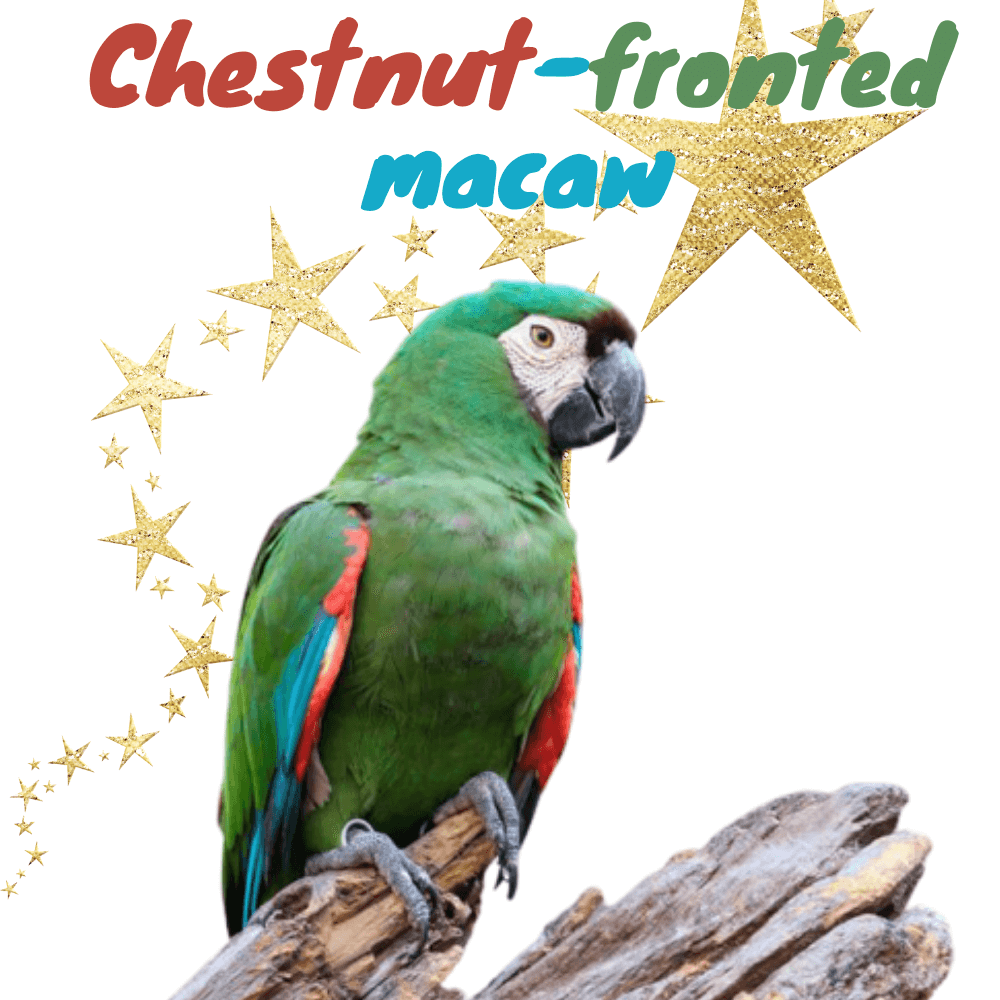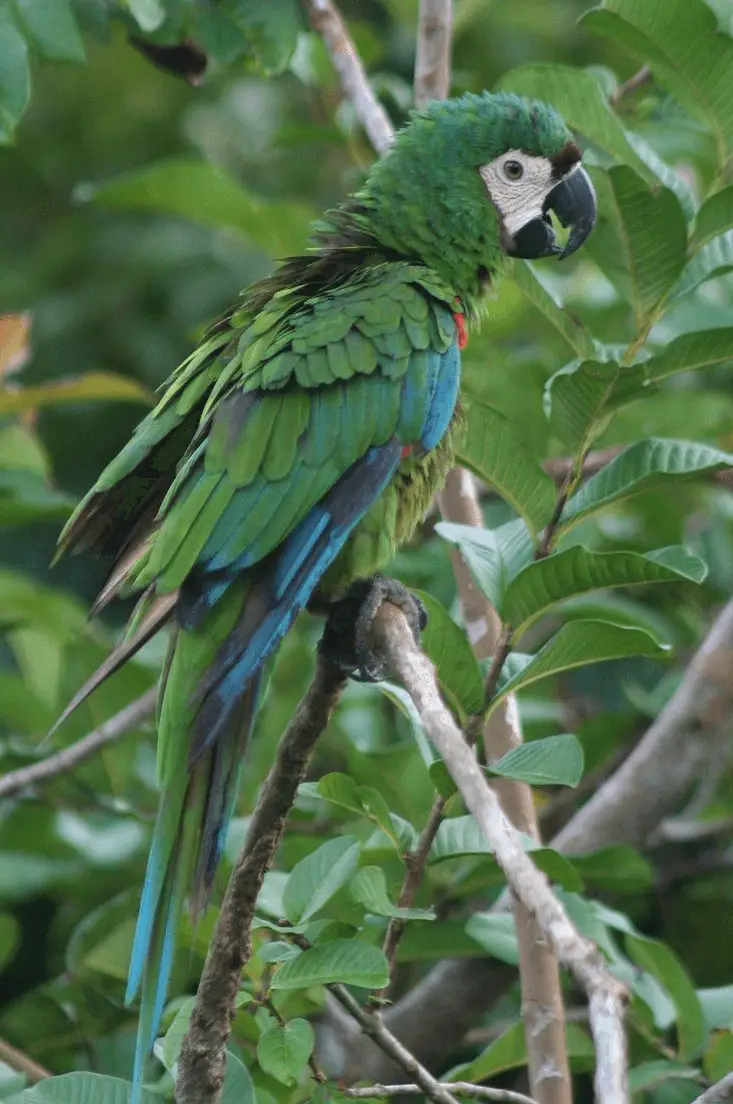
The Chestnut-fronted macaw has the scientific name, Ara Severus. It belongs to the Psittacidae family and in English, it is known as Severe Macaw or Chestnut Fronted Macaw. It is also known as Maracanã-Açu.
If taken care of, a pet Chestnut-fronted macaw can live for up to 30 years, and some live even longer. It is one of the most popular species of mini macaw, reaching an average of about 45 centimeters in length from the beak to the tip of the tail feathers.
Chestnut-fronted macaw habitat
He is originally from South and Central America.
Physical characteristics of Chestnut-fronted macaw
Chestnut-fronted macaw has most of its body a sparkling green, with dark brown spots on the forehead and under its beaks. The crown of his head has a part with blue feathers.
They sport red spots on the edges of their wings. The tail feathers are blue and the belly feathers are red. They display the classic face mask of macaws, with fine lines of dark feathers that surround the eyes. The female of maracanã-guaçu is physically identical to the male.
The great personality of the Chestnut-fronted macaw, which is friendly and comical, makes it a favorite among bird lovers. With proper socialization, he will quickly form a strong connection with his owners.
It will respond well to training and show impressive speech skills. These birds need a lot of mental stimulation, so potential owners should make sure that they have a lot of free time to spend with their new pets.
Chestnut-fronted macaw feeding
Like any other pet bird, the Chestnut-fronted macaw must have adequate nutrition to have a good and healthy life. Feed your bird a varied diet.
Such a diet consists of a mixture of seeds and high-quality feed. You can also offer fresh fruits and vegetables daily, always seeking to meet the animal’s nutritional requirements.
Activities for Chestnut-fronted macaw
Chestnut-fronted macaw is a mini macaw and yet they are still built to have a lot of muscle strength. In the wild, he can fly several hundred kilometers a day looking for food.
Because of this, it is important to provide a sufficient amount of exercise for your pet to maintain a healthy body condition.
A pet Maracana must have at least 2 to 4 hours of free time outside his cage every day. This will allow the bird to be able to stretch its muscles and exercise its wings and beak. Remember that it is easier to tame a baby Chestnut-fronted macaw than an adult.
Dwarf macaw

The behavior of the Chestnut-fronted macaw
Attractive and charmingly attractive, the Chestnut-fronted macaw has exploded in popularity as a pet in recent years. These birds have a lot of personality in a smaller and easier to care for the body.
This bird is known to be very social, however, like all macaws, it requires a certain amount of training to ensure that the bird remains tame.
If you want to buy this bird the first thing you should do is make sure that you have enough time to spend with your pet during the day.
Without adequate socialization and mental stimulation, he can grow bored and depressed, leading to destructive behaviors and stress-related illnesses.
Maracanãs-guaçu can be fun pets, but they require time and specialized attention, which not everyone can offer. Make sure you are prepared before bringing a Chestnut-fronted macaw or any other macaw to your home.
Think about the costs of owning such a bird, especially with things like veterinary bills, high-quality food, and cages and toys.
How to download or listen to Chestnut-fronted macaw songs
you can download the corner of the Chestnut-fronted macaw on our website, for that just click with the right button over the name of the corner, then click on (Save Link As and choose the place where it will be saved). You can also listen, just click on the play button.





















